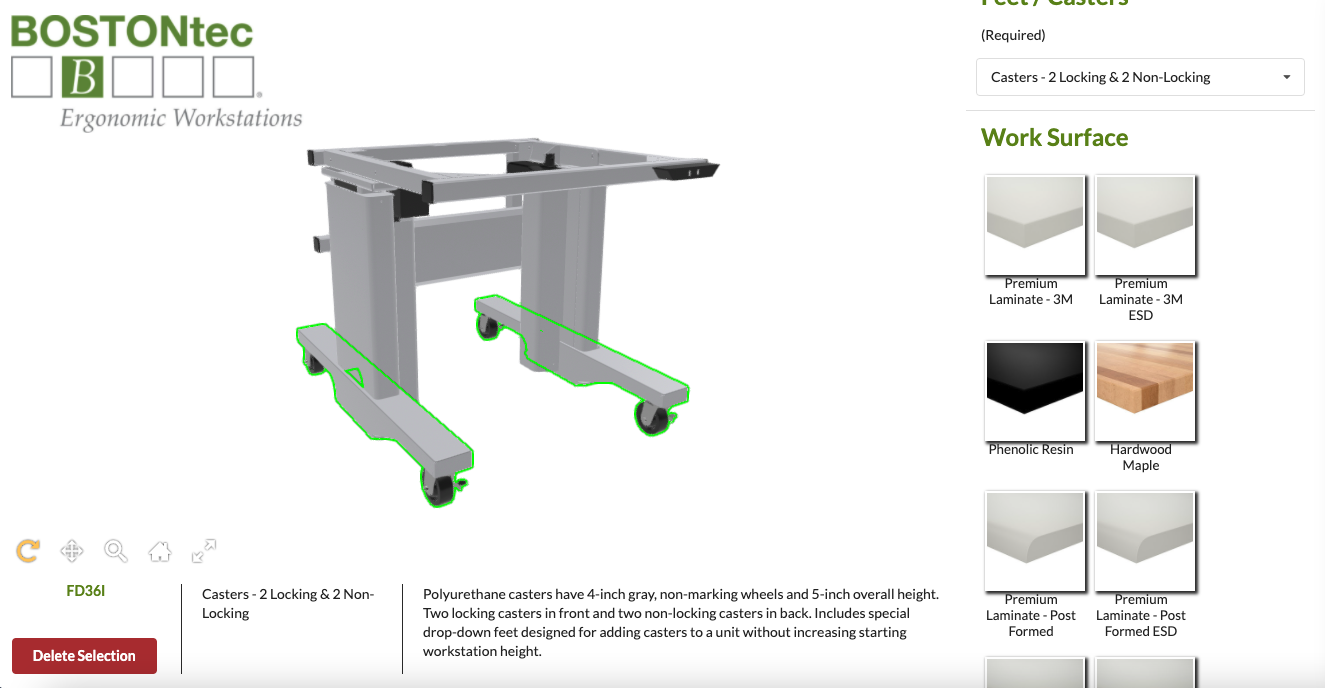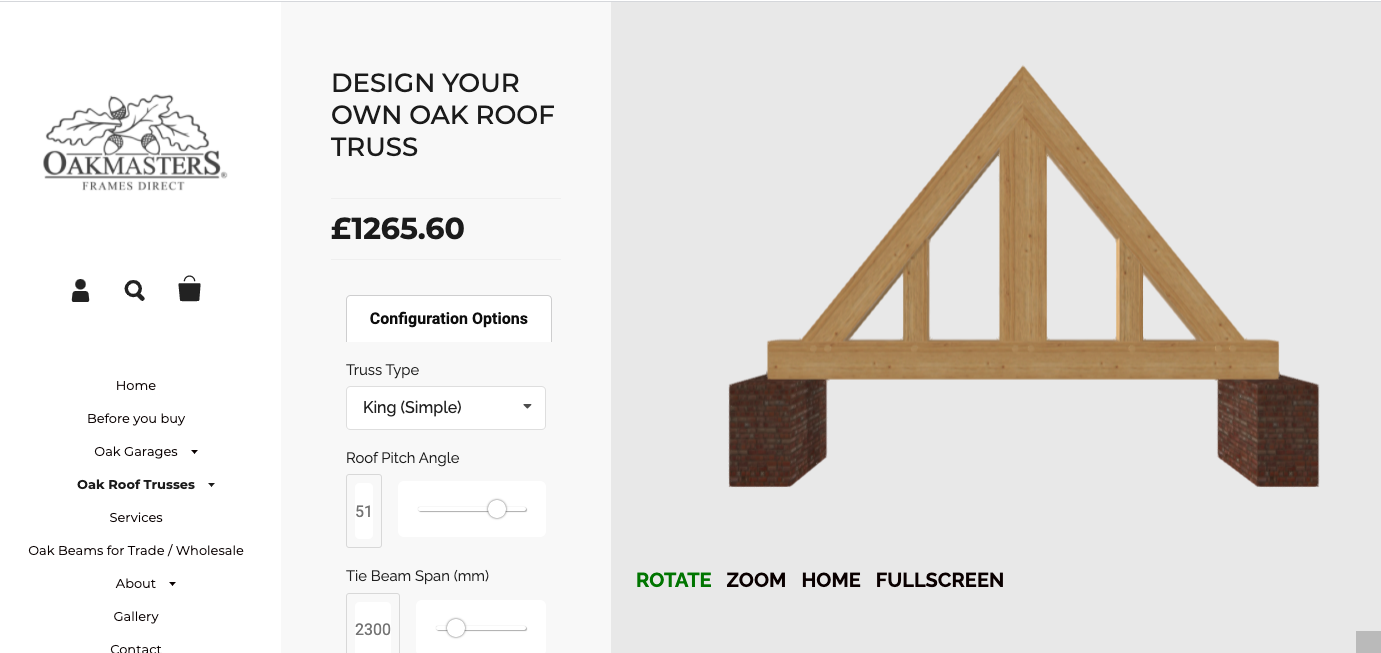You’ve probably done the same thing before.
It’s been more than two hours, and you’ve yet to decide which piece of furniture you want to buy. You thought shopping online would’ve been faster than going to the store.
Unfortunately, it feels like you were wrong.
You’ve seen how the piece of furniture would look in different colors. But something is missing.
You suddenly wish that you could see the furniture from every angle. If only the store had a 3D configurator, that would help a lot.
If you’re reading this, this probably hasn’t ever happened to you.
If that’s the case, then you’re among the lucky few.
Unfortunately, for most B2B and B2C eCommerce customers, this is a constant frustration. According to Deloitte, 1 in 5 consumer interested in personalized products or services are willing to pay a 20% premium. And that’s not all – 90% of customers will respond to personalization, especially when it comes to advertisement.
Unfortunately, most eCommerce businesses use 2D standard visual configurators. However, these 2D configurators can also be restrictive. But, are 3D product configurators more suitable?
What is a 3D configurator?
A 3D configurator is an online tool that allows customers to examine a product from every angle, alternating features in real-time to see how the product changes (and often, the price along with it).
Typically, customers can access most configurators from multiple platforms (desktop, tablet, mobile, etc.).
Moreover, a 3D product configurator lets your customers personalize a product to their liking while seeing the dynamic pricing for each option.
How does a 3D product configurator work?
This process is a simple overview of how most 3D product configurators work.
Step 1: The configurator asks the user to select which element or product they wish to configure.
Step 2: The configurator will ask specific questions to ascertain the exact requirements of the user
Step 3: The 3D configurator displays a rendering of the product with all the selected features, purchase price, purchase options, and any other relevant information.
Sound’s pretty simple, right?
Yes, it does, you can see an example of 3D configurator experience for a Stand Mixer here:
How can 3D product configurators be used in Ecommerce?
3D Product Configurators—Applications for Ecommerce
Merchandising and Advertising in 3D
3D product configuration allows your customers to see how their choices affect the final product offering. Whether you’re a B2B or B2C brand, increasing your conversions is one of the hardest things to make improvements on. They lower the hesitation of customers when they are looking to make a purchase online by allowing customers to interact with the image of a product from all angles.
The better your customers understand your product, the more likely they are to feel comfortable purchasing it online. You can use 3D configurators to:
- create advertisements that contribute to a positive customer experience
- engage customers with 3D ads that show your customers the features of your products before they even get to your site
There’s so much opportunity to increase your sales conversions.
Product Catalogs in 3D
Typically, customers prefer to use a 3D product configurator for complex products such as customizing a car or furnishing a room. B2B customers may want to see product options for various heavy equipment such as construction machinery.
When there are so many possible permutations, the ability to analyze product options is even more essential. As shoppers browse your dynamic 3D catalog, their vision for these significant purchases comes to life.
If you use augmented reality, buyers can begin to understand how your products will fit into their world.
2D vs. 3D Product Configurators
Most businesses prefer 2D product configurators for two main reasons:
Faster rendering possible.
2D images have smaller file sizes than their 3D counterparts. This usually supports a faster preview.
Light in design.
With only two dimensions, 2D configurators are less time-consuming to create artwork.
However, 3D product configurators are worth the investment in the long run.
3D configurator: 4 Reasons To Invest Now
1. Buyers want customization
Customization is increasingly more critical for both B2B buyers and B2C customers.
When retailers let customers control their products, customers are more likely to engage with your brand. When your customers engage more, they have a better sense of quality.
Personalization also allows customers to demonstrate their preferences.
Customers also feel more ownership over their custom-product which means they’re more likely to convert.
2. Visualization instills confidence
While the convenience of eCommerce is undeniable, customers may still vastly prefer brick-and-mortar shopping over online retail.
There are two reasons why:
- the trust that arises when you can see and touch a product, and
- the ability to leave with the products immediately after purchase.
However, 3D product configurators can help with this dilemma and make eCommerce stores attractive.
Customers can configure complex products in hundreds of combinations of colors, textures, parts, and other elements and instantly see the results.
With their dream product on screen, they can rotate, zoom in, take it apart, and put it back together. The presence of such a 3D configurator can be the deciding factor in converting an eCommerce customer.
3. The future of manufacturing is on-demand
A 3D product configurator is an absolute must to allow unparalleled customer freedom to bring their dream product to life.
3D configurators also help streamline CPQ and reduce errors in the sales cycle because business rules are applied to ensure compatibility and availability
Moreover, 3D product configurators promote efficiency.
As customers use the self-service functions of configurators, they free up sales reps’ time. Sales representatives can then focus on more strategic tasks.
4. Set yourself apart from the competition
Use 3D product configurators to keep customers coming back to your business.
The ability to fully customize a product and view it in stunning resolution usually promotes a positive customer experience.
Therefore, brands offering 3D configuration can deliver the experience needed to attract and amaze customers—repeatedly.
3D Configurators: Examples of Online Brands That Use Them Successfully
#1 Steelcase
Now that remote working is popular; most people prefer having customized home-office furniture.
Steelcase offers a range of architecture, furniture, and technology products and services.
Their 3D product configurator is easy to use and allows you to design your chair to your liking.
#2 BOSTONtec
One of BOSTONtec’s specialties is designing ergonomic office desks.

They use a 3D product configurator to help customers build and customize products with moving parts.
#3 Oak Beams & Frames
Oak Beams & Frames is a leading manufacturer and supplier of oak frames to retail customers and construction businesses.

Their 3D product configurator is highly intuitive and supports zoom and 360 rotation. The product also auto-updates as you make adjustments.
How do you make a 3D configurator?
Creating a 3D product configurator involves these steps:
a) Determine your goals and Key Performance Indicators
b) Create 3D content, or optimize your existing content
c) Create your configurator
d) Distribute your content
However, the reality is that it can be a tedious process.
But there’s a solution.
You can partner with Zoovu and get all our in-house experts to help.
3D Configurators—Get the Wow Factor For Your Business
Most businesses use standard visual configurators. However, 3D configurators can make a massive difference for your business.
Customers come back to businesses with the wow factor.
Partner with Zoovu today and get the ‘Wow” factor for your business.


